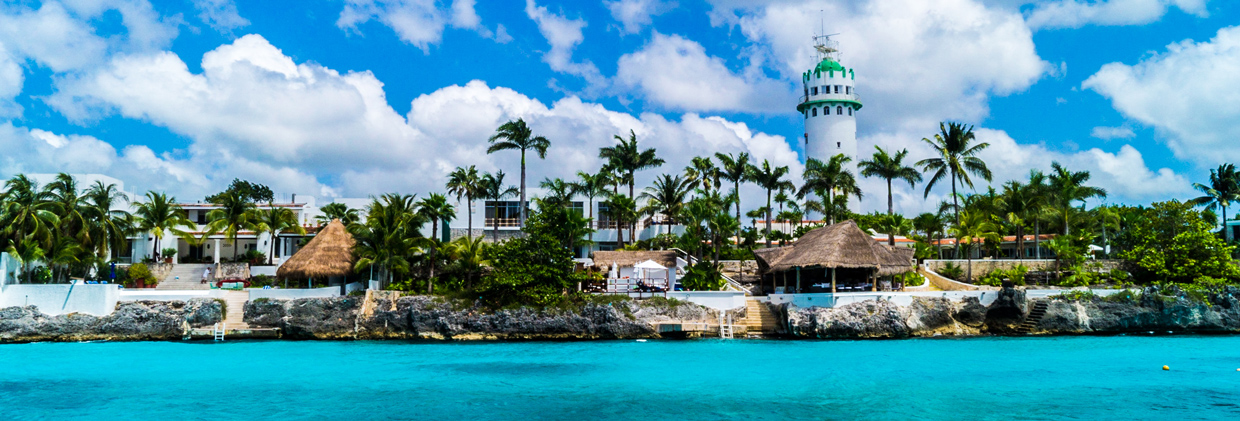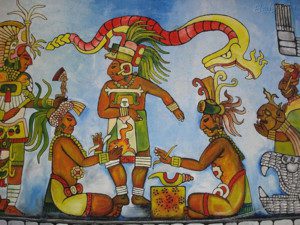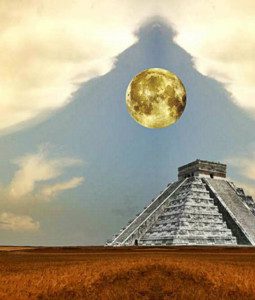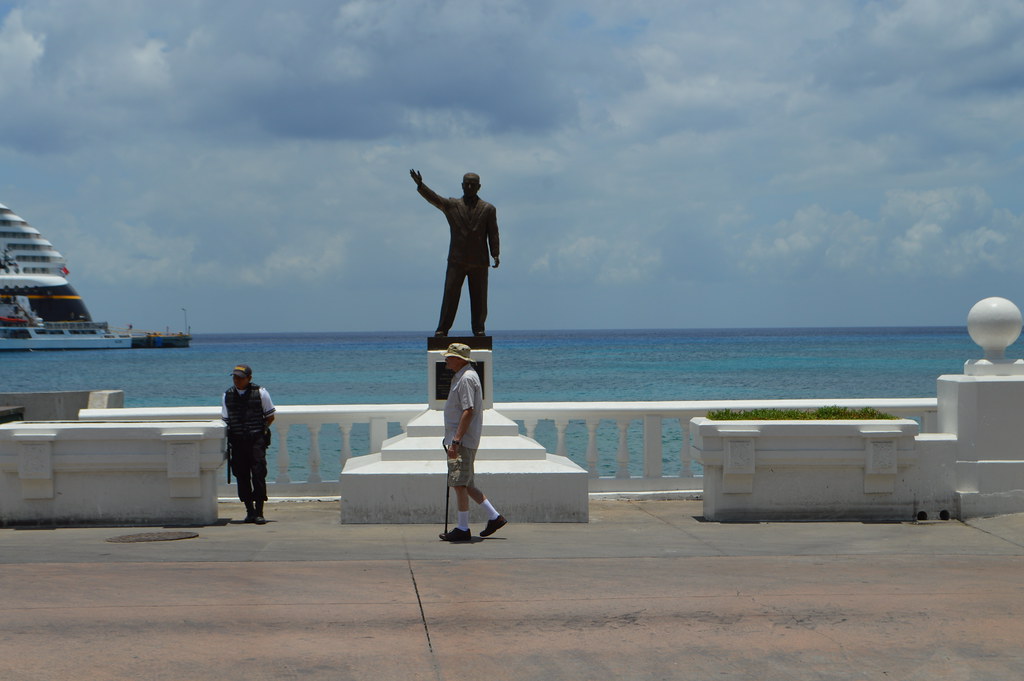
Mayan Weather Predictions
Honoring Traditions: “Las Cabañuelas,” Mayan Weather Predictions
The weather for the entire year can be predicted by the first 12 days of the year …
 The ancient Mayan are revered for their knowledge of astronomy, however, they have also left behind another gift, the tradition of “Las Cabañuelas,” which has survived over 500 years. According to tradition, the first twelve days of the year represent the weather for the each month in the year (January 1st = January; January 2 = February, and so on). When reaching January 13, it goes the other way around, this is, January 13 is December, January 14 is November, and so on. This cycle ends on January 24th, hereafter each remaining day represents two months, morning being one month, in this case January, and afternoon representing February. Then, on the 31st day of January, the 24 hours in the day represent one month starting at 01:00 am until noon (December) and then going backwards again.
The ancient Mayan are revered for their knowledge of astronomy, however, they have also left behind another gift, the tradition of “Las Cabañuelas,” which has survived over 500 years. According to tradition, the first twelve days of the year represent the weather for the each month in the year (January 1st = January; January 2 = February, and so on). When reaching January 13, it goes the other way around, this is, January 13 is December, January 14 is November, and so on. This cycle ends on January 24th, hereafter each remaining day represents two months, morning being one month, in this case January, and afternoon representing February. Then, on the 31st day of January, the 24 hours in the day represent one month starting at 01:00 am until noon (December) and then going backwards again.
The Mayans, and later the Spaniards, used this system to predict the weather, with January being the month that forecasted the rest of the year. A Franciscan monk traveling with Christopher Columbus, wrote: “Through their gods and observations on the first days of the year, the natives know which days will be good and which will be bad, which will be rainy and which will be dry”.
According to a very knowledgeable local historian, who has for many years, been tracking the weather using this system, has found it to still be relatively accurate. For more information on this interesting Mayan Tradition, and how the weather can be predicted, check out the following link.
Honrando tradiciones: “Las Cabañuelas”, pronósticos mayas sobre el clima
Es posible pronosticar el clima de todo un año durante los primeros 12 días del año.
Los antiguos mayas son admirados por sus conocimientos en astronomía, sin embargo, también

nos legaron otro obsequio: la tradición de “Las Cabañuelas” que ha sobrevivido más de 500 años. De acuerdo a la tradición, los primeros doce días del año representan el clima que prevalecerá durante cada mes del año (el 1º de enero equivale al mes de enero; el 2 de enero al mes de febrero, etc.). Al llegar a día 13 de enero, el conteo retrocede siendo entonces que el día 13 de enero representa al mes de diciembre, el 14 de enero al mes de noviembre y así sucesivamente. Este ciclo concluye el día 31 de enero y las 24 horas del día representan un mes del año, iniciando a la 01:00 a.m. y al llegar al mediodía (diciembre), retrocede el conteo nuevamente.
Los mayas y, posteriormente los españoles, utilizaron este sistema para predecir el clima, siendo que el mes de enero pronosticaba el clima para el resto del año. Un monje franciscano que viajaba con Cristóbal Colón escribió: “Saben estos indios por su consultas a sus dioses y su observación de los primeros días del año cuáles serán buenos y cuáles serán malos, cuáles pluviosos y cuáles secos”.
De acuerdo con un sabio historiador que durante años ha analizado el clima utilizando este sistema, ha encontrado que es relativamente exacto. Para más información acerca de esta interesante tradición y de cómo puede pronosticarse el clima, eche un vistazo a este enlace.
Otra fugitiva de la Ciudad de México. Mónica ha hecho de Cozumel su hogar definitivo. Desde su llegada en 1981, trabajo en turismo en todos los lugares habituales: hoteles, buceo, aeropuerto, ferries, hasta que se abrió la oportunidad de desempeñarse en su campo. Desde finales de la década de los años 70 Mónica ha estado traduciendo e interpretando, dedicándose plenamente a ello a partir de 1998, y ha asistido a extranjeros y locales de la Isla a establecer su residencia y sus negocios. Es traductora con gran experiencia, ávida historiadora y una gran fuente de tradiciones y leyendas locales.
- Animals Pets Day of the Dead - October 24, 2025
- Day of the Dead - October 24, 2025
- October celebrations and the beginnings of the Day of the Dead - October 17, 2025
Another escapee from Mexico City, Monica has made Cozumel her definite home. Since her arrival -in 981- she worked in tourism in all the usual venues: hotels, scuba diving, airport, ferries, until the opportunity to practice in her chosen field grew. Since the latter part of the 70s Monica has been translating and interpreting, fully devoting herself to it since 1998, and has assisted foreigners and Island residents establish residence and businesses- She is a Translator with extensive experience, an avid historian and a great source of local lore and legends. Otra fugitiva de la Ciudad de México. Mónica ha hecho de Cozumel su hogar definitivo. Desde su llegada en 1981, trabajo en turismo en todos los lugares habituales: hoteles, buceo, aeropuerto, ferries, hasta que se abrió la oportunidad de desempeñarse en su campo. Desde finales de la década de los años 70 Mónica ha estado traduciendo e interpretando, dedicándose plenamente a ello a partir de 1998, y ha asistido a extranjeros y locales de la Isla a establecer su residencia y sus negocios. Es traductora con gran experiencia, ávida historiadora y una gran fuente de tradiciones y leyendas locales.
Cozumel Malecon Melgar
How Cozumel’s Waterfront Street Got It’s Name If you’ve ever strolled Cozumel’s...
ByMonica SauzaJanuary 2, 2025October celebrations and the beginnings of the Day of the Dead
Text & Translations by Monica Sauza In Mexico, no matter where you...
ByMonica SauzaJanuary 2, 2025Mexican Sounds, Colors, Traditions Monica Sauza
Sounds, Colors, Traditions text & translation by Monica Sauza After eleven years...
ByMonica SauzaJanuary 2, 2025Mexican flavors tastes history Monica Sauza
Mexican flavors tastes history Monica Sauza Walking through a few Mexican flavors,...
ByMonica SauzaJanuary 2, 2025





















Leave a comment